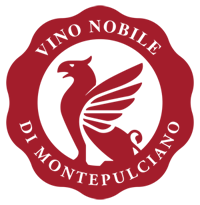CLIMATE CONDITIONS
Winter 2013/2014 was particularly mild. Average maximum temperatures and, above all, average minimum temperatures for January and February were significantly higher than the average for the period. Minimum temperatures only dropped below zero on 5 days, and only for a few hours, and rainfall in these two months was abundant and frequent.
As a consequence of these temperature levels there was an early start to root activity, and as a result guttation was already being observed in better-exposed vineyards in mid February.
Bud break took place between 24 March and 6 April, almost a week earlier than the average period for this phenological phase.
Spring was completely regular, both in terms of temperature and rainfall, as compared to recent years when the passage from winter temperature levels to summer temperatures had taken place abruptly. This meant that shoot growth was gradual and constant, without any slowdowns or sudden spurts. Flowering began around 25-26 May, when minimum temperatures had already stabilised above 10°C for a few days. At the beginning of June a rapid increase in temperatures was observed, reaching over 30°C every day from 6 to 13 June. This would turn out to be one of the hottest weeks of the year.
The high temperatures of this period led to contemporaneous flowering, even in vineyards with different exposures. The flowering process was brief, and was already complete by around 10 June throughout all the vineyards.
The first two weeks of June, which had seemed to signal the onset of summer, were followed by a period of marked instability, characterised by abundant rainfall, which continued until the end of July. Over 100 mm of rain fell in June, and temperatures were average for the period. In July, the weather was even more unusual: as well as the frequent and abundant rainfall that led to a monthly total of 100 mm, average maximum temperatures were decidedly below the long-term average maximum: 26.8°C against a long-term maximum average of around 29.7°C. The following month of August was also cooler than normal, with average maximum temperatures of 27.7°C against a long-term average maximum of 29.5°C. However, August experienced only brief and scattered showers (30 mm in total). The month of September was characterised by temperatures in line with the long-term average, and some days of rainfall concentrated in the second week.
In June and July the vines exhibited constant vegetative growth in response to these weather patterns, forming an impressive leaf canopy. This growth in turn demanded a significant commitment from winegrowers to keep it in check, in order to protect the grapes (primarily, preventing the onset of downy mildew), and to aerate the bunches by thinning and stripping the vegetation.
Veraison began and ended within the first three weeks of August. As with the flowering, the process was uniform and contemporaneous. The subsequent maturation of the grapes (sugar accumulation, acid degradation, polyphenol accumulation and so on), on the other hand, was slower than usual, owing to a combination of factors: the continuing availability of water led to a marked increase in grape size (around 25% larger than average), entailing a proportional dilution of the pulp; and the low brightness of a few days in September drastically reduced the vines’ photosynthetic efficiency. It wasn’t until towards the end of September that the Sangiovese grapes reached the level of maturity required to allow the production of the Vino Nobile di Montepulciano. The grapes were harvested in the last week of September and the first ten days of October.
Summary of phenological phases:
Bud break: last week of March – first week of April.
Flowering: 25 May – 10 June.
Veraison: 1 – 25 August.
The 2014 Wines
The 2014 wines are generally of a high quality. At the first tastings, following malolactic fermentation, they were appreciated for their very lively colours, decisive fruity notes, and medium body supported by a light tannic frame. From an analytical viewpoint, alcohol levels are between 13% and 13.5% ABV, with acidity and total polyphenol content within the average. To sum up, these are fine, elegant wines, promising greatness if they are finished with care, but they will not be of great longevity.


